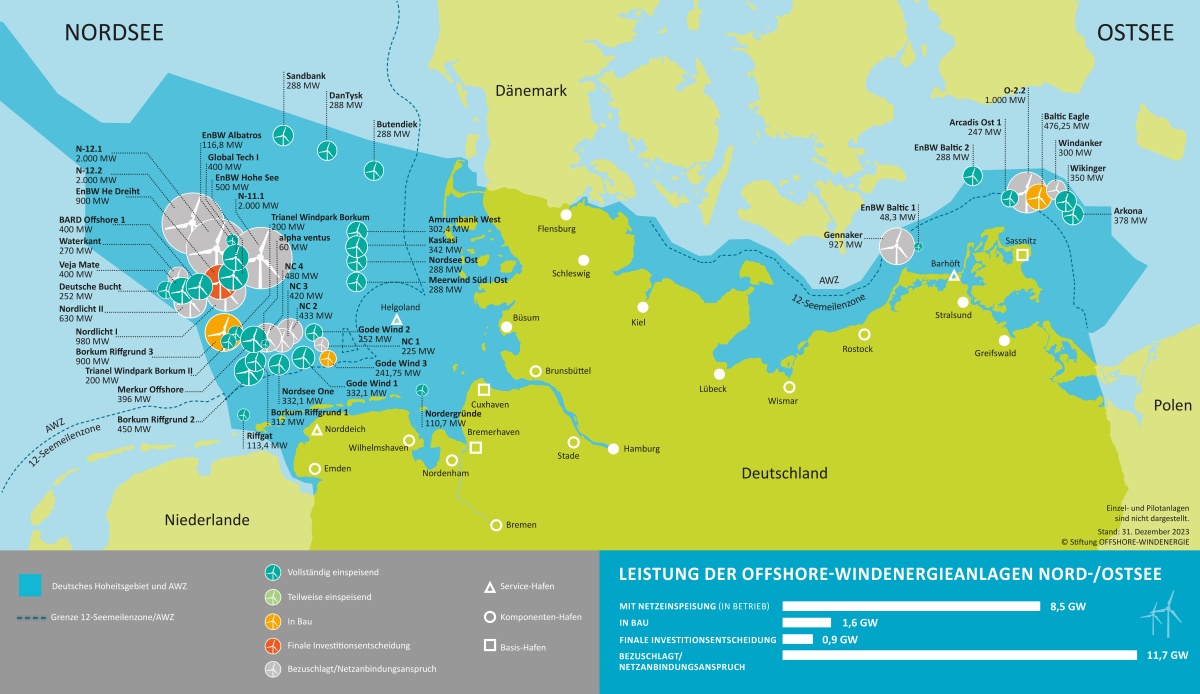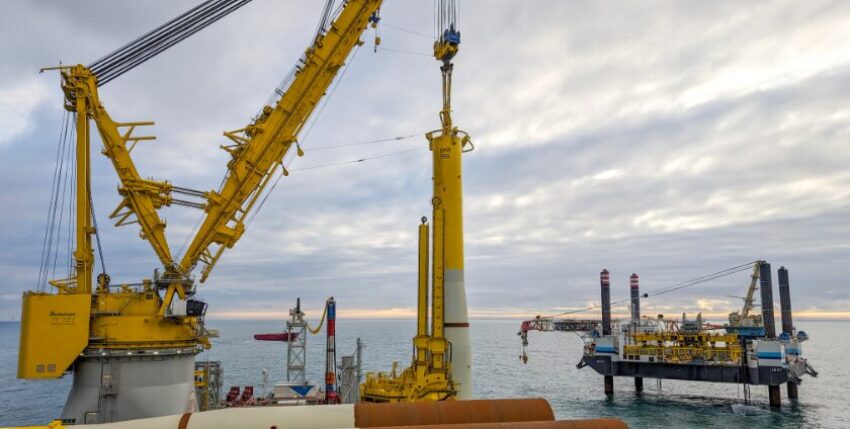In the coming years, Germany wants to erect new, large wind turbines off its own coast. However, there is a lack of space for the huge components in the seaports.
Gigantic dimensions
According to the German government, offshore wind power is to be expanded to a capacity of 30 gigawatts (GW) by 2030 and 70 GW by 2045. This corresponds to an expansion of a further 60 GW within the next 21 years. According to industry figures, this will require up to 7,000 new offshore wind turbines to be installed. At 300 metres, they are almost as high as the Eiffel Tower and stand on foundations weighing 2,500 tonnes, with high-tech rotor blades over one hundred metres long. In addition, there are converter stations weighing 20,000 tonnes as connection nodes.
Infrastructure requirements
From the perspective of the wind energy industry, the planned expansion of wind energy at sea also requires the creation of additional capacities in German seaports, such as logistics centres, heavy-duty storage areas and quay facilities as well as the necessary hinterland connections. Up to 200 hectares are required for the additional heavy load areas alone. This is roughly equivalent to the area of 270 football pitches, according to an analysis by the Offshore Wind Energy Foundation (the German organisation for the use and research of wind energy at sea). The foundation was established in 2005 on the initiative of the Federal Ministry for the Environment, Nature Conservation and Nuclear Safety; the coastal states and all economic sectors involved in offshore wind energy were also involved.
The seaports are the central hubs of offshore wind energy, according to the foundation's managing director. Whether as base harbours for the construction and subsequent dismantling of wind farms, as service ports for operation and maintenance, as a storage location or as a production site - they fulfil a variety of functions.

Realisation
Germany and its seaports are heading for a significant bottleneck if the expansion of offshore wind turbines continues to pick up. This also affects ships for transport and construction as well as the subsequent operation of the wind turbines. For this reason, investments totalling billions will also be needed to upgrade German seaports in the coming years. However, this would require a focussed financing strategy from the federal government, the federal states and the EU - and this is not a new realisation.
Source: spiegel.de, Offshore Wind Energy Foundation










